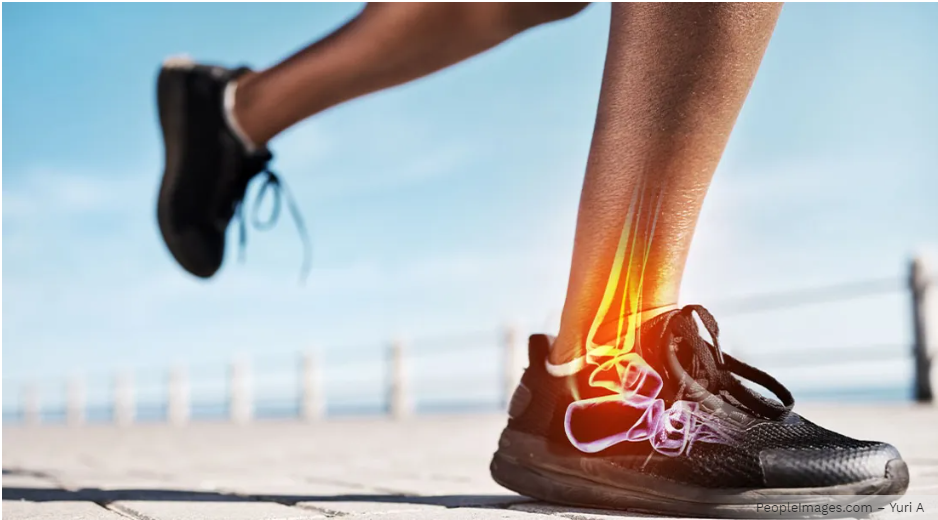Why Foot Strength Shouldn’t Be Neglected from Your Training

When it comes to fitness, many people tend to focus on major muscle groups and flashy exercises, often overlooking a critical component of overall strength: foot health. While it may seem trivial, the strength and stability of your feet are fundamental to nearly every movement you make. Neglecting foot strength can lead to a cascade of problems, including injury, decreased performance, and overall instability. In this article, we’ll explore the importance of foot strength, how it impacts your overall fitness, and practical ways to incorporate foot training into your routine.
The Foundation of Movement
Your feet are your body’s foundation. They are complex structures made up of 26 bones, 33 joints, and over 100 muscles, tendons, and ligaments. They play a crucial role in balance, stability, and mobility. When your foot muscles are weak, it can affect your posture and the mechanics of your entire body. Strong feet support proper alignment, allowing for more efficient movement and reducing the risk of injury.
The Role of Foot Strength in Athletic Performance
For athletes and fitness enthusiasts, strong feet translate into better performance. Whether you’re running, jumping, lifting, or engaging in sports, your feet are the initial point of contact with the ground. Weak foot muscles can lead to decreased power output and inefficient movement patterns. This inefficiency can result in fatigue and, over time, increase the likelihood of injury. Strengthening your feet helps improve proprioception, or the body’s ability to sense its position in space, which is critical for agility and balance.
Common Foot Problems from Neglect
Neglecting foot strength can lead to various problems, including:
1. Plantar Fasciitis
This common condition results from inflammation of the plantar fascia, a thick band of tissue that runs along the bottom of the foot. Weak foot muscles can lead to overloading this tissue, causing pain and discomfort, particularly in the heel.
2. Flat Feet or High Arches
Weakness in the intrinsic muscles of the foot can contribute to structural issues such as flat feet or high arches. Both conditions can lead to a range of problems, including ankle pain, knee issues, and lower back discomfort.
3. Ankle Sprains
Strong, flexible feet help support the ankles. When foot strength is compromised, the risk of ankle sprains increases significantly, especially during dynamic activities like running and jumping.
4. Balance Issues
Weak feet can lead to balance problems, making it challenging to perform daily activities and increasing the risk of falls, particularly in older adults.
The Connection Between Foot Strength and Overall Health
The health of your feet goes beyond athletic performance. Strong feet contribute to better posture and alignment, which can alleviate tension and pain in other areas of the body. This holistic connection underscores the importance of incorporating foot strength into your fitness routine. Furthermore, as we age, maintaining foot strength becomes crucial for preserving mobility and independence.
How to Incorporate Foot Strengthening into Your Training
Integrating foot strength exercises into your routine doesn’t have to be complicated. Here are several effective methods to improve foot strength and overall stability:
1. Toe Curls
Sit in a chair with your feet flat on the ground. Slowly curl your toes and grip a small towel or marbles with your toes, lifting them off the ground. Hold for a few seconds and then release. Repeat for several sets.
2. Heel Raises
Stand with your feet hip-width apart and slowly lift your heels off the ground, rising onto your toes. Hold for a moment at the top before lowering back down. This exercise helps strengthen the calves and the muscles in your feet.
3. Single-Leg Balance
Standing on one foot for extended periods helps improve stability and strengthen the intrinsic muscles of the feet. Try to maintain your balance for 30 seconds on each foot, gradually increasing the time as you improve.
4. Resistance Band Exercises
Using a resistance band, you can perform various foot exercises. For example, loop the band around your toes and point and flex your foot against the resistance to strengthen the muscles in your feet and ankles.
5. Barefoot Training
When safe to do so, incorporate barefoot exercises into your routine. This practice helps strengthen the muscles in your feet and improves proprioception. Start with simple movements like walking or standing barefoot on grass, then progress to more challenging activities.
6. Foot Massage and Mobility Work
Regularly massaging your feet can enhance blood flow and help maintain flexibility. Use a tennis ball or foot roller to roll out tight spots and increase mobility in the foot’s tissues.
The Bottom Line
Incorporating foot strength training into your fitness regimen is essential for everyone, regardless of age or activity level. Strong feet provide a solid foundation for movement, enhance athletic performance, and reduce the risk of injury. By paying attention to your foot health and incorporating specific exercises, you can improve your overall strength, balance, and stability.
Don’t wait until you experience foot pain or injury to start focusing on this vital aspect of your training. Make foot strength a priority, and you’ll enjoy the benefits of improved performance, enhanced mobility, and better overall health.
Conclusion
In summary, the feet are often overlooked in fitness training, but they deserve more attention than they typically receive. By understanding the importance of foot strength and incorporating exercises to improve it, you can enhance your overall performance and reduce your risk of injury. Remember, every strong body starts from the ground up — so give your feet the care and training they need to support your health and fitness goals.
Comments
Post a Comment